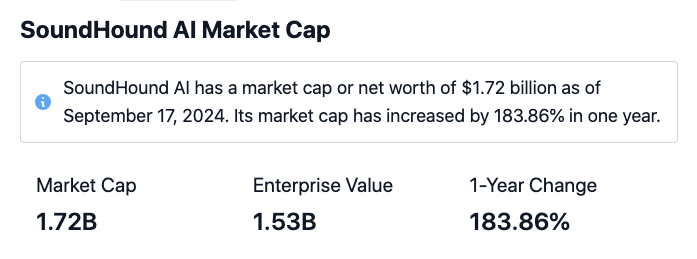20 Recommended Ways For Deciding On Incite Sites
20 Recommended Ways For Deciding On Incite Sites
Blog Article
Top 10 Tips On How To Assess The Integration Of Ai Stock-Predicting/Analyzing Platforms And Their Compatibility
AI stock trading platforms that forecast and analyze stocks based on AI require compatibility with each other. An integrated platform that is seamless with your existing tools and systems as well as workflows will greatly improve efficiency and effectiveness. Here are 10 strategies to help you analyze the compatibility and integration between these platforms.
1. Check Brokerage Integration
Supported brokers: Ensure the platform works with your preferred brokerage account or trading account.
Trade execution: Ensure that the platform offers the direct execution of trades via the broker that is integrated.
Account synchronization - Examine to see if the platform you are using is capable of syncing accounts' balances, transactions and positions in real-time.
2. Examine API Availability
API access is important: Developers can use an API, or Application Programming Interface (API), to build their own software and automate processes.
API documentation: Ensure that the API is well documented with examples and use-cases.
Limitations on rate. Verify that the API you're considering has reasonable limits on rate and can manage your volume of usage.
3. Check Third-Party Tool Integrity
Popular tools: Check if the platform is compatible with tools like Excel or Google Sheets.
Data import and export: Make sure the platform permits easy export and import of data from and to other tools.
Extensions/Plugins: Make sure your platform supports extensions and plugins to provide more features.
4. Test Compatibility Operating Systems
Desktop compatibility: Make sure the platform you choose is compatible with Windows, macOS and Linux.
Mobile compatibility: Check whether the platform has a mobile app for iOS and Android.
Web-based accessibility: To enhance flexibility, check if the platform's interface is accessible through a web browser.
5. Assessing the Data Integrity Capabilities
Data sources: Ensure the platform is able to integrate with different data sources (e.g., market data sources, news feeds, social media sentiment).
Real-time feeds for data: Check if the platform allows for real-time integration of data in order to provide up-to date analysis.
Make sure that your platform supports the import of historical data for backtesting or analysis.
6. Check compatibility with cloud and on-premise
Cloud-based platform: Accessible from anywhere, with an Internet connection.
Solutions on-premise. If you are interested in deploying on-premise make sure your platform permits it.
Check whether the platform has an option to mix cloud and on-premise capabilities.
7. Check for Cross Platform Synchronization
Device synchronization. Make sure the platform is synchronized to transfer settings and data across devices (desktops/laptops/mobiles/tablets).
Verify whether changes made on a device are instantly reflected on another.
Access offline: Determine if the platform allows only limited access to data or functions when offline.
8. Make sure that the trading strategies are compatible. strategies
Automated or algorithmic trading: Ensure that the platform you use for trading supports these strategies.
Custom indicators. Verify if the platform allows you to use scripts or technical indicators.
Backtesting strategy: Find out whether your platform permits you to backtest trading strategies with historical data.
9. Examine Security and Compliance
Data encryption: Make sure whether the platform is using encryption to protect data both in transit and at rest.
Authentication Check if the platform provides secure methods of authentication (e.g. Two-factor authentication).
Regulatory compliance : Verify if the platform is compliant with applicable regulations.
10. Scalability of Tests, Performance, and Efficiency
Scalability: Ensure the platform can handle growing amounts of data and users as the demands of your business increase.
Performance during load: Verify whether the platform responds in high-volatility situations.
Resource usage: Check whether the system is efficient in using the resources of the system (CPU memory, bandwidth, CPU).
Bonus Tips
User feedback: Look for user reviews and testimonials when you are evaluating the site.
Trial period: Try the platform free of charge or download a demonstration to check out how it works with your current software and workflow.
Support for customers: Make sure the platform provides a solid assistance for integration-related problems.
By following these tips, you can effectively assess the integration and compatibility of AI trading platforms that predict or analyze stocks in order to ensure they are compatible with your current systems and increase the efficiency of your trading. See the best published here about trading ai for website info including trading ai bot, stock analysis websites, best ai for trading, trade ai, free ai tool for stock market india, trading with ai, ai trading bot, best ai trading software, stock analysis app, best stock analysis app and more.
Top 10 Ways To Evaluate The Speed And Latency Of Ai Stock Trading Platforms
Latency and speed are critical elements when it comes to looking at AI stocks and analyzing trading platforms, specifically for algorithmic traders, active traders, as well as high-frequency traders. Milliseconds of delay could affect profitability and trade execution. Here are ten top suggestions to determine the speed and speed of these platforms.
1. Real-time Data Feeds for Evaluation
Data delivery: Make sure that the platform can to provide data in real-time, with a minimal delay (e.g. less than a millisecond).
Data source proximity - Look to see if the servers of your platform are close to major exchanges. This will reduce the time for data transmission.
Data compression - Ensure that the platform uses efficient techniques for data compression to speed up data delivery.
2. Time to test trade execution
Order processing time It is the amount of time it takes for the platform to process and complete trades once you have submitted an order.
Direct Market Access: Confirm that the platform provides DMA. DMA is a feature that allows you to transmit orders directly to exchanges and without intermediaries.
Execution reports: Find out if the platform provides comprehensive execution reports, such as timestamps for order submission, confirmation, and fill.
3. Assess Platform Receptiveness
User interface speed (UI): Measure how quickly the platform's user interface responds to your inputs.
Chart updates: Make sure that charts and visualisations update in real-time, with no lag.
Mobile app performance. When you use an app designed for mobile, you should ensure it's running as fast and efficiently as the desktop application.
4. Check for Low Latency Infrastructure
Server Locations: Check that the platform uses servers that are low-latency and located near major financial exchanges, hubs or other sites.
Co-location services: Find out if the platform offers co-location, which allows the hosting of your trading algorithm on servers close to the exchange.
High-speed network: Check if the platform uses high-speed fibre optic networks, or other low latency technologies.
5. Evaluation of Simulation and Backtesting Speed
Check the speed at which your platform is able to analyze and process past data.
Platform latency is required to allow live simulations of trades in real time.
Parallel processing: Ensure that the platform is using parallel processing, or distributed computing to speed up complex computations.
6. Examine the API Latency
API response time: This is the speed at which an API platform responds to requests.
Rate limits. Verify if there are reasonable limits on the API. This can help prevent delays in high-frequency transactions.
WebSocket Find out if your platform is compatible with WebSocket protocols, which allow for streaming of data in real-time with minimal latency.
7. Test Platform Stability During Loading
High-volume Trading: Simulate huge numbers of trading scenarios to determine if your platform is responsive and stable.
Market volatility: Try out the platform during periods of high volatility in order to see if it can manage rapid price changes.
Test your strategy for stress Test your strategy: Find out if the platform allows users to test their strategy under extreme circumstances.
8. Examine Connectivity and Network
Internet speed needs. Make sure that your connection is at the standards for your platform to ensure the best performance.
Redundant connections: Find out if the platform can support redundant internet connections to prevent the possibility of downtime.
VPN latency: When using a VPN platform, check if the latency is significant and also if there are alternative options.
9. Check for Speed Optimisation Features
Pre-trade Analyses: Check whether the platform offers pre-trade analysis to improve execution speed and order processing.
Smart Order Routing (SOR). Make sure that the platform uses SOR in order to locate the quickest and most cost efficient execution venues.
Monitoring latency Make sure your platform lets you monitor and analyze your latency live.
Review User Feedback and Benchmarks
User reviews: Study reviews from users to assess the platform's speed and latency performance.
Benchmarks from third-party sources: Search for independent benchmarks or reviews that evaluate the performance of the platform with those of its competitors.
Case studies: Check whether the platform offers case studies or testimonials highlighting its low-latency capabilities.
Bonus Tips
Trial period: Take advantage of an unpaid trial or demo to evaluate the platform's performance and latency in real-world situations.
Customer support: find out if the platform offers support for latency issues or optimization.
Hardware needs. Check to see whether a particular platform requires special hardware (e.g. a high-performance computer) to function at optimal speed.
Follow these tips to evaluate the speed and latency for AI stock predicting/analyzing platforms. Choose the platform that best suits your trading needs, and minimizes delays. Low latency is crucial for high-frequency and algorithmic traders. Even small delays can have a huge impact on the profitability. Take a look at the recommended best ai trading software for site recommendations including ai trader, trader ai intal, stock analysis websites, stock analysis tool, coincheckup, trading ai bot, ai for trading, copyright advisor, chart ai for trading, copyright advisor and more.